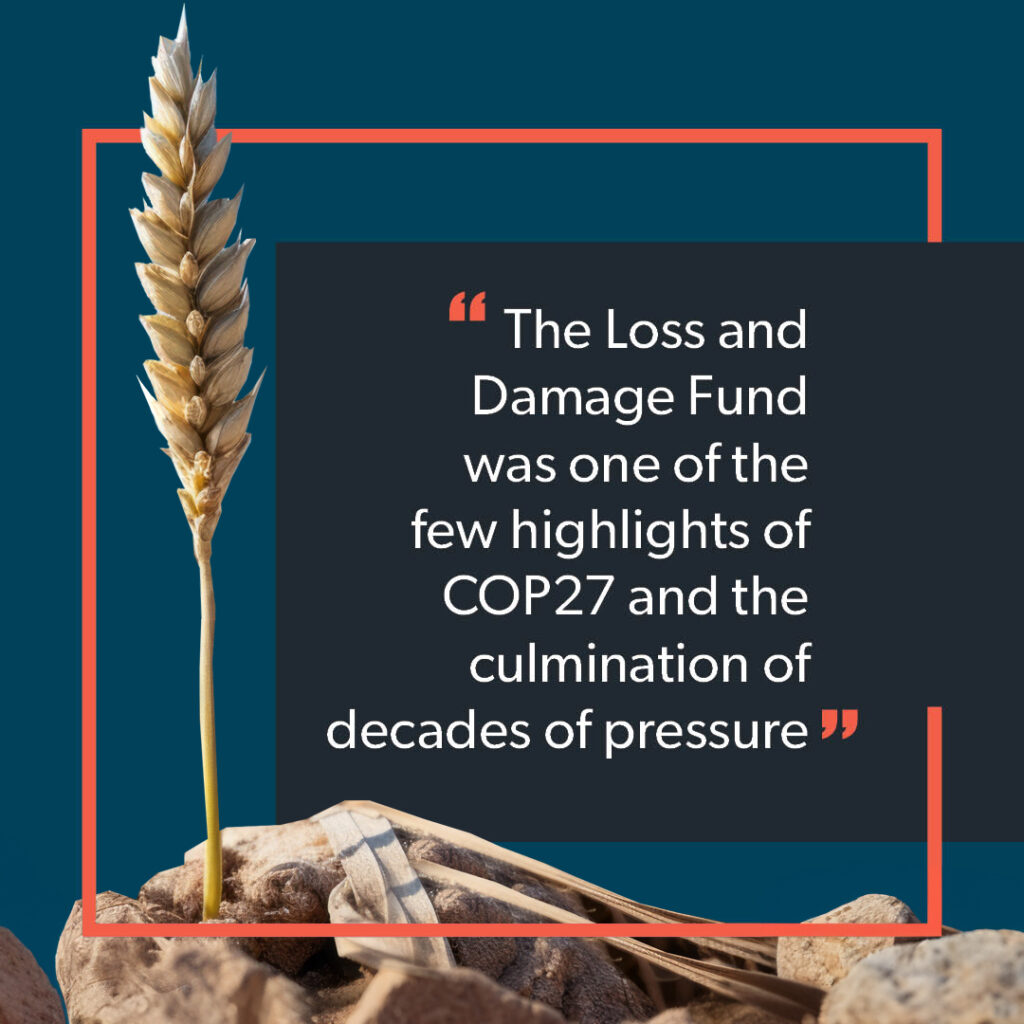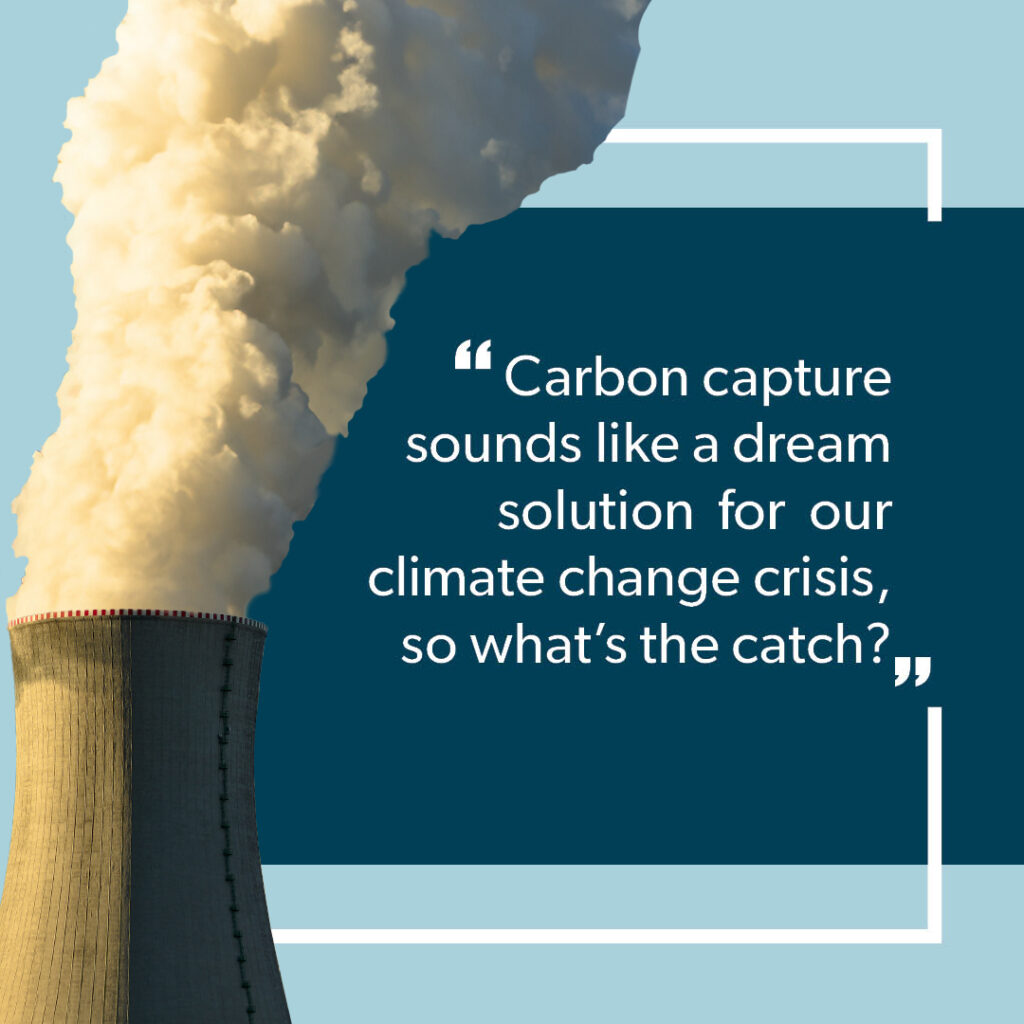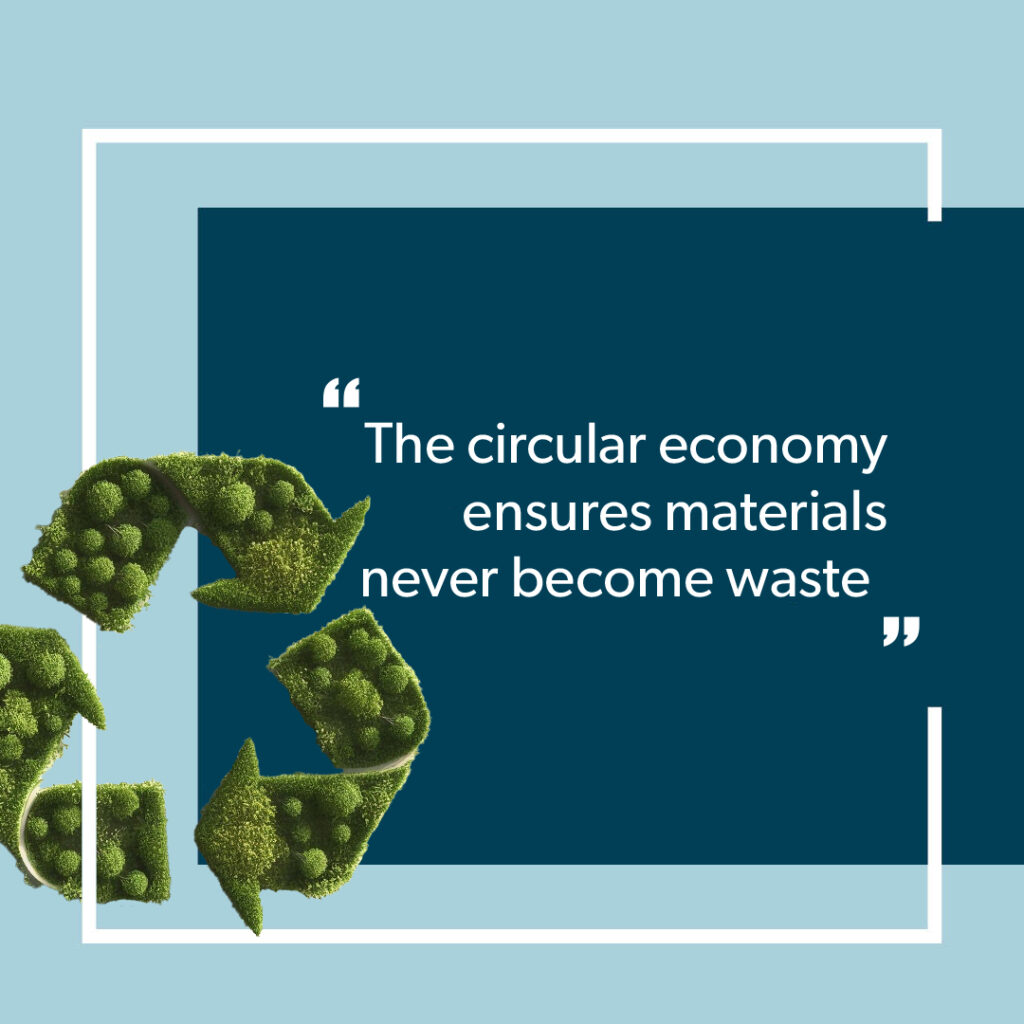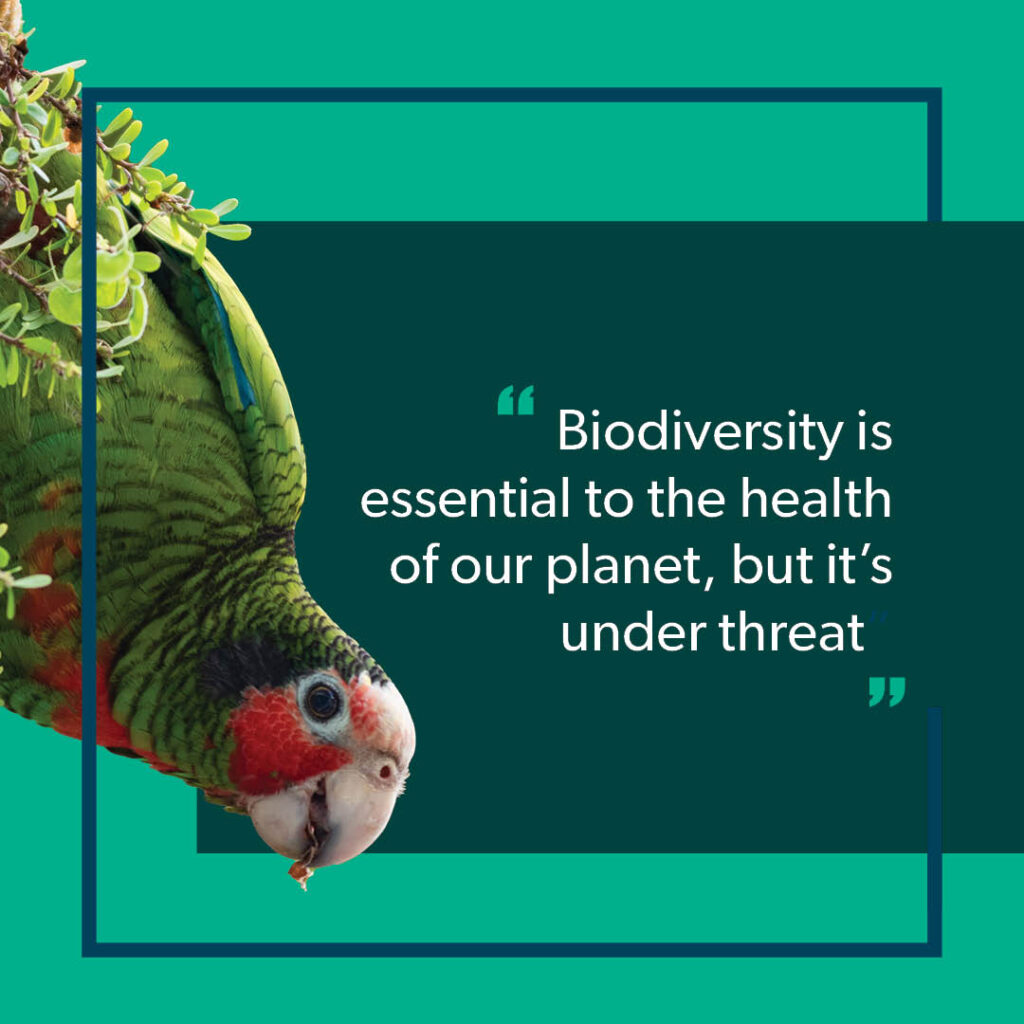
Sustainability is no longer a buzzword, but a necessity. As we move towards a greener future, it’s important to keep up to date on emergent technologies, public policy and trends that are shaping industry, the global economy and the day-to-day lives of Earth’s inhabitants.
With the United Nations Climate Change Conference (COP28) underway, let’s look ahead to 2024 and five topics that may dominate the sustainability conversation:
1. The Loss and Damage Fund

The Loss and Damage Fund was one of the few highlights of COP27 and the culmination of decades of pressure from climate-vulnerable developing countries. The fund will provide financial assistance to nations most vulnerable and impacted by the effects of climate change. Unfortunately, poorer countries who have done the least to cause the climate crisis are the first to bear the brunt of increased impacts. In the year since countries agreed to create the fund, talks have constantly broken down over who exactly should be responsible for paying into the fund and which countries should benefit.
Just weeks before the COP28 kicked off in Dubai, countries finally agreed on key measures to supply the funds, which will initially be administered by the World Bank, before drawing funds from the US, EU, UK and larger developing nations. The blueprint must be formally ratified at the COP28 summit and while it is likely to be adopted, some campaigners and researchers believe the current agreement falls short of the funds required to deal with the coming climate crisis. Nicholas Sten, climate economist, believes developing countries “will need US$2 trillion a year in climate funding by 2030”.

2. The debate around carbon capture
Carbon capture is a process that involves trapping carbon dioxide (CO2) produced by power plants and other industrial facilities, typically before it can be released into the atmosphere and contribute to global warming. Carbon dioxide that has been captured through this process is either recycled for other purposes or stored where it cannot escape—a process known as “carbon sequestration.” It sounds like the dream solution for our climate change crisis, so where’s the catch?
Carbon capture technology is incredibly expensive to implement, let alone at the scale required to siphon the billions of tonnes of carbon out of the atmosphere daily, as estimated by the UN Intergovernmental Panel on Climate Change. As such, the technology is seen as unsuited to developing nations and not sustainable from an SDG perspective. As of 2023, the world’s largest CO2 removal plant is in Iceland and can remove only 4,000 tonnes of CO2 from the atmosphere a year. To give you an idea of the scale of the challenge ahead, that low figure is nearly half of what all other plants are pulling combined. And it’s still nowhere near enough.
Critics also lament the idea that carbon capture will empower us to continue burning fossil fuels while detracting from other viable and less expensive methods of CO2 reduction.
Though doubts have been cast on the nascent technology, scientists and activists agree that all options must be investigated thoroughly if we’re to avoid 3C of warming. Investment continues to pour into the industry in the hope of generating both scale and efficiencies in the cost of producing and running these facilities. The United States passed the Inflation Reduction Act of 2022, increasing carbon capture tax credits by 70%, while Canada and other large economies are creating incentives for further investment in the technology.
Carbon removal and methodologies will be discussed thoughout COP28, so watch this space.

3. Circling back around to the circular economy
Breaking the Plastic Wave forecasts that, by 2040, plastic waste generation will have more than doubled, while plastic leakage into the ocean will have tripled and plastic stock in the ocean will quadruple. The impact on our marine ecosystem and biodiversity will be catastrophic, putting the onus on us to achieve circularity as soon as possible.
The circular economy ensures materials never become waste. It is a model of production and consumption that advocates for reusing, repairing, refurbishing and recycling existing materials and products for as long as possible, eliminating unnecessary waste and pollution.
In 2022, 175 countries committed to a historic UN resolution, which legally bound the countries to end plastic pollution, including the marine environment. The Intergovernmental Negotiating Committee (INC) was tasked with holding multiple sessions across the globe with signatories, with the express aim of completing negotiations by the end of 2024. The INC has since held sessions in Uruguay, Paris and Nairobi, with the fourth slated to take place in Canada in April.
Chemical pollution has also come under growing scrutiny and a new committee on chemicals has also been set up following the plastics treaty milestone.
As individuals, we can contribute towards a circular economy by reducing, re-using, and recycling plastics, while keeping the pressure on the public and private sectors. See how ReGen will help achieve this in the Cayman Islands.

4. Restoring biodiversity
Biodiversity is essential to the health of our planet, but it’s under threat. The World Wildlife Fund reports that we’ve lost 69% of the world’s wildlife since 1970, with populations in Latin America and the Caribbean plummeting at a horrifying rate of 94%. Habitat loss, climate change, pollution and exploitation have been identified as key drivers of this decline in biodiversity.
To combat this, there has been a growing movement towards biodiversity pledges. These aim to increase the participation of non-state actors in the development and implementation of the post-2020 global biodiversity framework, support national biodiversity strategies and action plans and national implementation, support strategies for biodiversity mainstreaming, with the engagement of indigenous peoples, local communities, women and youth and further promote education and public awareness to catalyse action in the context of the 15th meeting of the Conference of the Parties (COP15), the post-2020 framework and the Action Agenda.
The Leaders’ Pledge for Nature is one such initiative that has gained momentum. It commits political leaders from all regions and the EU to reverse biodiversity loss by 2030 for sustainable development. The pledge outlines 10 actions that will help the world achieve the vision of Living in Harmony with Nature by 2050.
If we don’t save and restore biodiversity, future generations will inherit a barren, unrecognisable planet.

5.The sprint to net-zero races on
The fulcrum of greenhouse gas emission reduction is net-zero, but how do we get there and how well as species are we doing? Net-zero refers to the balance between the amount of greenhouse gas (GHG) that’s produced and the amount that’s removed from the atmosphere. It can be achieved through emission reduction and emission removal in the form of carbon-negative solutions. These solutions can be nature-based, for example the restoration and protection of mangroves and the planting of trees, or technological, such as the aforementioned carbon capture technologies.
Thankfully, corporate net-zero commitments continue to rise, with 75% of the world’s largest greenhouse gas emitters setting targets to achieve net-zero by 2050, or sooner, with those ambitions covering at least scope 1 and 2 greenhouse gas emissions. This is already up by 69% compared to March 2022 – an impressive move in the right direction.
The three scopes are:
Scope 1: Direct emissions from sources that are owned or controlled by the company, such as emissions from burning fuel in company-owned vehicles.
Scope 2: Indirect emissions from the generation of purchased electricity, steam, heating or cooling consumed by the company.
Scope 3: All other indirect emissions that occur in a company’s value chain, including both upstream and downstream emissions. Examples include emissions from the production of purchased materials, transportation of goods, and disposal of waste.
Scope 3 is of particular interest as it accounts for most emissions and is outside of the direct control of corporations. If we look at the data from Apple’s 2022 Environmental Progress Report, 100% of the gross emissions stem from Scope 3 greenhouse gas emissions. With ambitious goals to become carbon neutral across its entire global supply chain by 2030, the technology giant has called on its global supply chain to decarbonise by 2030, “evaluating the work of its major manufacturing partners to decarbonise their Apple-related operations — including running on 100 percent renewable electricity — and will track yearly progress.” This ambitious goal requires 200+ suppliers to commit to using clean energy like wind or solar for their Apple production, 3,000 GWh of renewable energy to be generated across Europe per year to address the electricity used by Apple devices throughout the continent and 1 million metric tons of carbon to be removed in 2025 through Apple’s Restore Fund. Their major manufacturing partners including Corning Incorporated, Nitto Denko Corporation, SK hynix, STMicroelectronics, TSMC, and Yuto, have committed to power all Apple production with 100 percent renewable energy.
While corporations are the best poised to radically reduce greenhouse gas emissions and achieve net-zero, it isn’t all good news. According to Economic Intelligence’s Energy Outlook 2024, energy consumption will accelerate in 2024, with the global demand for coal, gas and oil reaching record levels – not ideal when it comes to reducing emissions. Despite all we know about the damage being done to our planet, 2024 will see the fourth consecutive year of coal consumption increase and is predicted to grow year-on-year until 2026.
One thing is clear, if we’re to achieve net-zero and leave behind a planet worth inhabiting for generations ahead, the public, private and financier sectors have to collaborate together to rapidly scale solutions while reducing our overreliance on fossil fuels.
